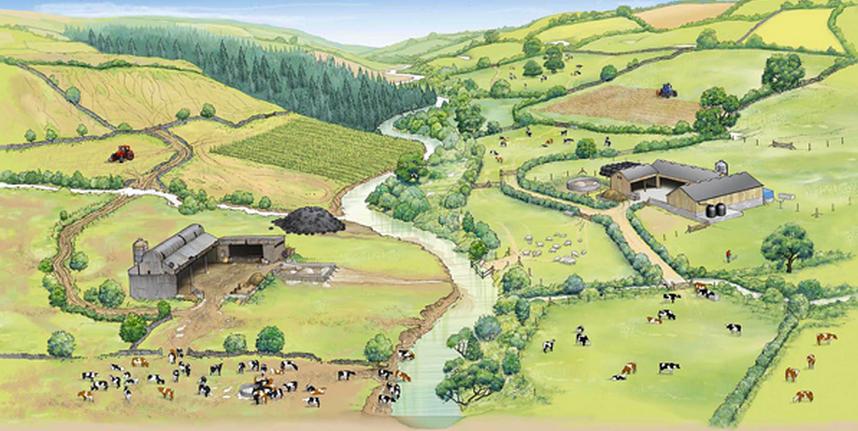
Agriculture and forestry
Searching balance between maintenance and ecology of rivers and brooks
Drainage, dredging and straightening have impacted most small rivers and brooks in Europe. Cleaned streams and brooks in agricultural regions sustain erosion, silting, and invasion by aquatic plants. Decreased water carrying capacity and bad water quality also cause problems, as well as a poorer biodiversity and monotonous landscape. Nutrients from farming are a major cause of algae blooms in lakes and the sea.
Small agricultural ditch beds are an integral part of running water ecosystem, and the problems in them reverberate in the state of our river, lake and coastal waters. The beds are also important for the landscape and as habitats for brook organisms: ditches running through agricultural areas often are significant for fishery as well.
It is advisable to transform flood-prone farmlands into flooded meadows, forests or wetlands. This helps control flooding and enhance ecological diversity, as flooding tends to increase in changing climate. In areas which are suitable for intensive cultivation, sufficient drainage is needed in wet conditions. If dredging of brooks for drainage purposes is necessary, it should be done carefully to preserve ecology. In dry regions and seasons, minimum flows for river ecology should be ensured. Overgrazing should be avoided if erosion of channels are a problem. Streams in the middle of farmland are important for the diversity of watercourse systems and for cultural landscapes, serving as ecological corridors and green infrastructure between other valuable habitats.
In forested areas flooding seldom harms tree growth. Instead of being monotonous, drainage channels, agricultural and forest streams can fulfill several benefits for ecology and landscapes. The restoration of several rivers and streams that were dredged for timber floating has been a major task of river restoration in Northern Europe, in particular.
Good maintenance practices
Good practices in farming and forestry should be applied through erosion control, buffer zones and wetlands, to prevent nutrients and solid substances running off into watercourses. Natural and constructed wetlands have benefits for flood control and diversity of fauna such as fish and birds. In drainage projects and dredging of existing streams, ecology and landscape should be considered. Straightening should be avoided and straight sections should be restored to meanders where possible. Natural vegetation on stream banks, protecting streams from erosion and overheating, should be maintained and planted.
Drainage can be accomplished without harming the ecology of rivers. Building of a 2-stage cross-section (pictures below) can be very beneficial. When placed to right place and measured as needed, the results can include all the following: no more flooding of the cultivated fields, development of river bank vegetation for erosion protection, improvement in water quality, and increased stability of the river banks which means less maintenance costs. Ecological benefits include year-round water in the low-flow channel for the fauna and increased biodiversity of the agricultural environment.
More information
Agriculture and forestry are closely linked to spatial planning. Learn more